Yellowing of Olive Tree Leaves
Olive trees are evergreen, drought-resistant trees having small, silver-green leaves. They are well-known for their valuable olives native to Mediterranean climates with hot, dry summers and moderate rainy winters. Yellowing of olive tree leaves can be a serious concern due to various reasons. Here, I will explain its causes and how to avoid it.
First I must know what are the suitable conditions for growing an olive tree. They prefer temperatures ranging from 21℃-29℃ for their best growth with consistent sunlight and well drained soils. But still they have the ability to tolerate very low frosting temperatures of -9 to 6℃ and other stress conditions.
For more information about houseplants you can visit: 7 Growth Stages of Tomato Plant
Chlorosis in Olive Tree Leaves
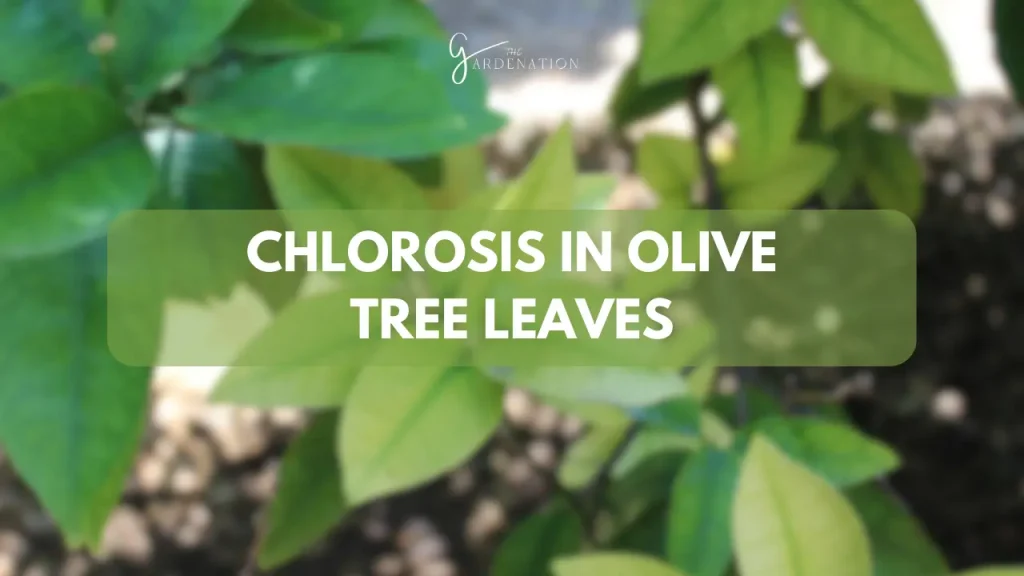
Chlorosis is a scientific term generally used to describe yellowing of leaves. The phenomenon of chlorosis in olive tree leaves is a factor signaling towards issues damaging plant health. It can be caused due to various reasons i.e, one of the major reasons is nutritional deficiencies, particularly deficiency of essential nutrients like potassium, magnesium nitrogen.
These nutrients play a vital role in the whole metabolism of plants. Magnesium is the main element in chlorophyll. Chlorophyll is a pigment due to which leaves appear in a fresh green color to us. In simpler terms, deficiency of magnesium means deficiency of green color.
Similarly, nitrogen is equally important for the lush green color of leaves. Nitrogen deficiency can also cause yellowing in leaves of plants. Other stressors like drought, flooding, pest and disease, unfavorable climate also play a part in yellowing of leaves of olive trees.
Summarizing this, an olive tree in its healthy state appears in fresh green state but due to response to stress it signals decline in its health by the appearance of various forms of unhealthy yellow leaves.
The reason for the yellowing of olive tree leaves can be difficult to identify. So here I am listing some types of yellowing of leaves with additional symptoms to recognize its cause.
1. Overall Yellowing:
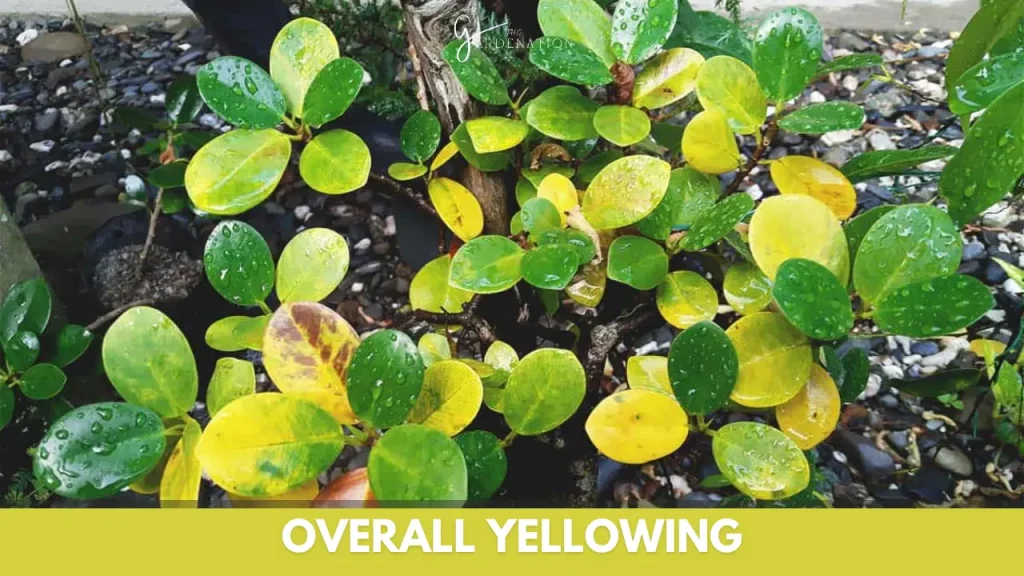
Overall yellowing, as the name defines it is widespread yellowing of the entire leaf surface indicating that the stress is affecting the whole plant. It could be due to inefficiency in chlorophyll synthesis that ultimately hint towards nutrient deficiency.
Essential nutrients like magnesium, nitrogen and potassium are crucial for chlorophyll synthesis and overall plant health. Their deficiency can cause chlorosis. Other causes might be water stress, either due to overwatering or underwatering causing leaching down of nutrients and dehydration respectively. Nutrient deficiency, environmental stress such as extremely unfavorable temperatures and very poor quality of soil can cause general yellowing of leaves.
2. Marginal Yellowing:
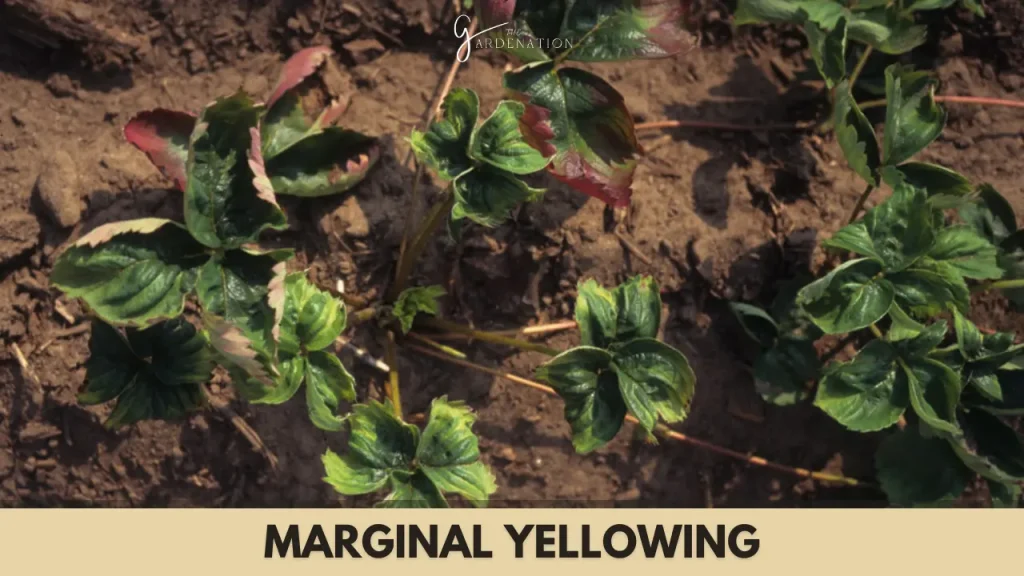
Yellowing around the edges only is called marginal yellowing. In this case a streak of yellow line passes through the margin of the leaf while the rest remains green.
The main cause of this condition is magnesium deficiency. Magnesium is an essential component in the structure of chlorophyll, thus, playing a major role in production of chlorophyll. Deficiency of magnesium initially affects older leaves of the plant causing yellowing to start from the margin of lead. If care is not taken then yellowing can move inwards.
3. Yellowing with Leaf Dropping:
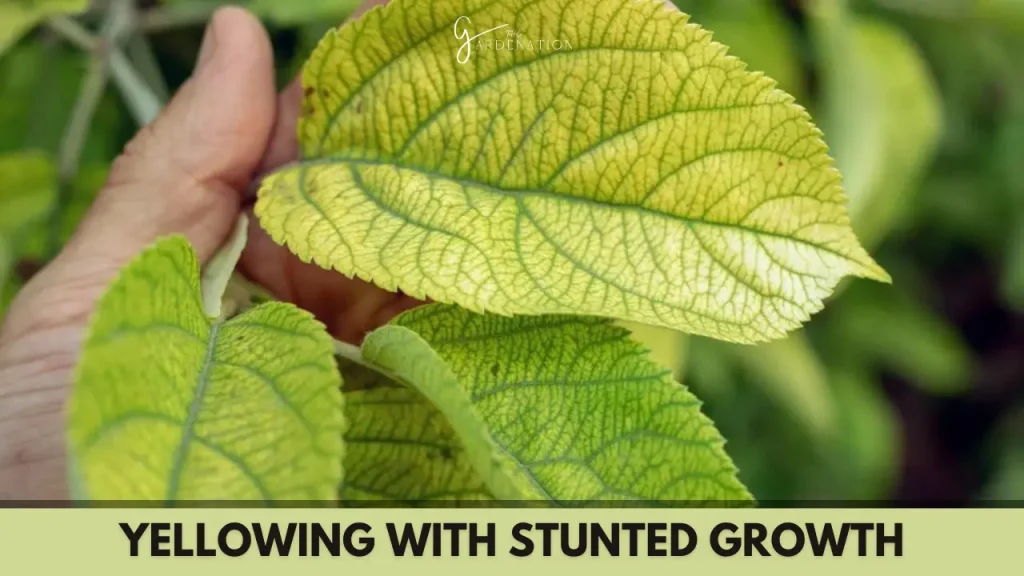
This condition is the indication of severe stress and damage. The leaves turn yellow and eventually drop off the tree. The major cause of this condition is drought stress. Prolonged unavailability of water causes leaves to wilt and yellow leading them to shedding.
Other causes of leaves dropping with yellowing may include root damage that can be from construction work, compacted soil or pests attack disrupting nutrient uptake leading leaves towards yellowing and premature leaf drop.
Diseases like Verticulum wilt or bacterial infections can also be the major cause of this disease.
4. Interveinal Chlorosis
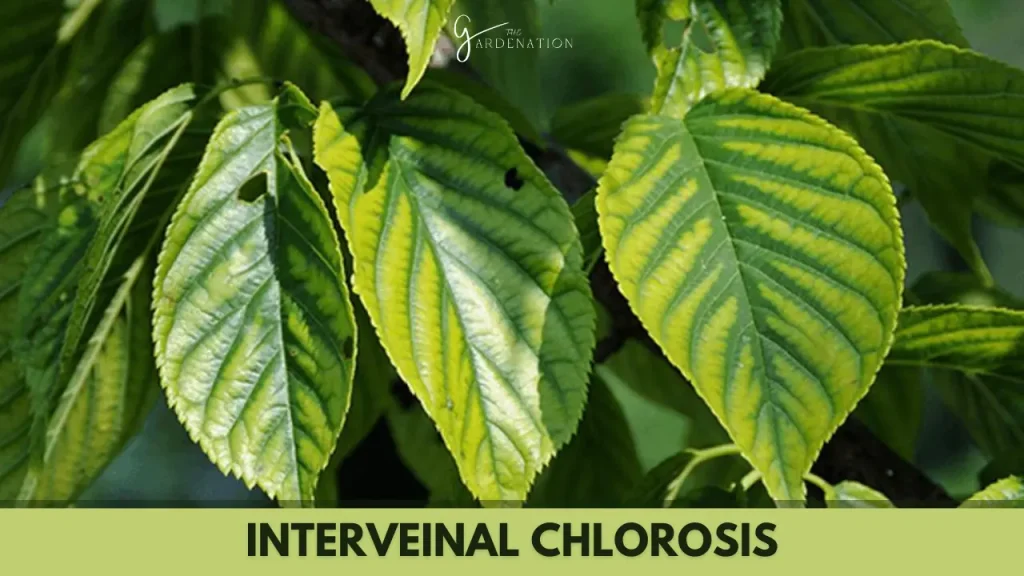
It is another form of yellowing of olive tree leaves indicating iron deficiency. In this condition yellowing occurs between leaf veins while the veins remain green forming a distinct pattern.
Iron plays a crucial role in chlorophyll production and also a major element aiding photosynthesis. So deficiency of iron affects the efficiency of photosynthesis causing yellowing of leaves.
5. Patchy Yellowing
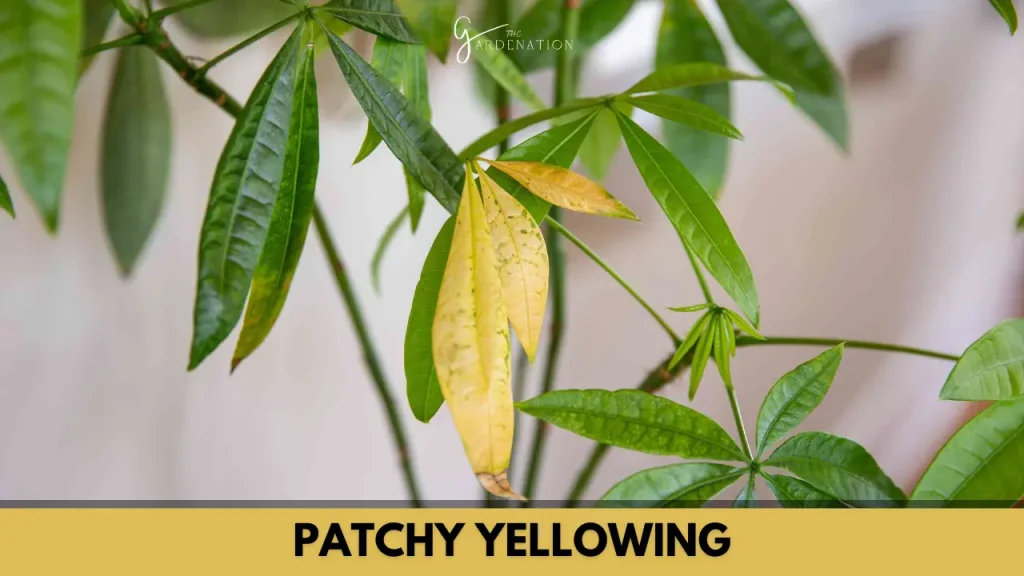
Mottling or patchy yellowing is defined as the formation of irregular patterns of yellowing with distinctive growth. They are due to several reasons listed below;
- Viral Infections- Viral diseases in olive trees can cause patchy yellowing or mottling on leaves. These patches can vary in intensity and patterns depending upon the type of viral attack. Examples of such viruses are, Olive latent virus (OLV-1) and Olive leaf yellowing-associated virus (OLYaV). These are known to cause symptoms such as mottling, yellow spots or irregular patterns on olive leaves.
- Nutrient Deficiencies- Another cause of patchy yellowing is nutrient deficiency. Irregular or inadequate application of fertilizer, poor soil health and root unable to uptake nutrients can cause nutrient deficiency in olive leaves.
- Pest Damage- Pests are the major cause in almost every problem related to plants somehow. Certain pests such as spider mites and thrips feed on olive tree leaves affecting plant health of plants with localized damage and yellowing. This feeding activity results in irregular yellow patches accompanied by silvering of the leaves.
- Environmental Stress- Although olive trees are highly stress tolerant plants. But, too harsh conditions like drought, heat stress, air pollution can cause its leaves to wilt.
6. Yellowing with Stunted Growth:

It can be regarded as a major health issue for plants. When yellowing of leaves occurs following reduction in its growth, the plant loses its vigor. It signals towards significant stressors affecting the overall health of the tree.
This type of condition is produced when different factors affect plants together such as nutrient deficiencies, diseases, root damage and environmental conditions that attack the plant altogether or few of them. These conditions hinder the tree growth and development process.
7. Peacock Spots:
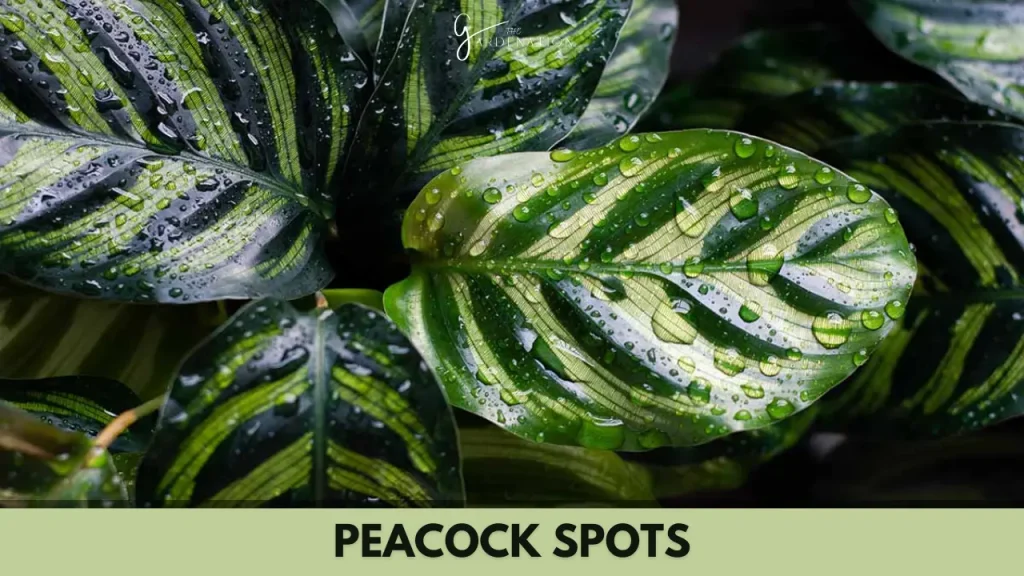
Peacock spots also known as peacock eye spots is the formation of circular or oval shaped spots on olive leaves surface. As the name shows these spots resemble the markings on the feather of cock. They are produced as concentric rings of various colors radiating outwards from the central point.
Like other types of yellowing peacock spots are also due to various reasons such as nutrient deficiency and pest attack. But, the major cause is fungal attack. The fungal pathogen can include various species such as Cercospora, Alternaria, or Spetoria causing peacock spot. These fungal spores land on leaves and when too much humidity and a certain period of wetness is provided to them, fungus grows on these leaves causing development of characteristic spots.
8. Seasonal Yellowing:
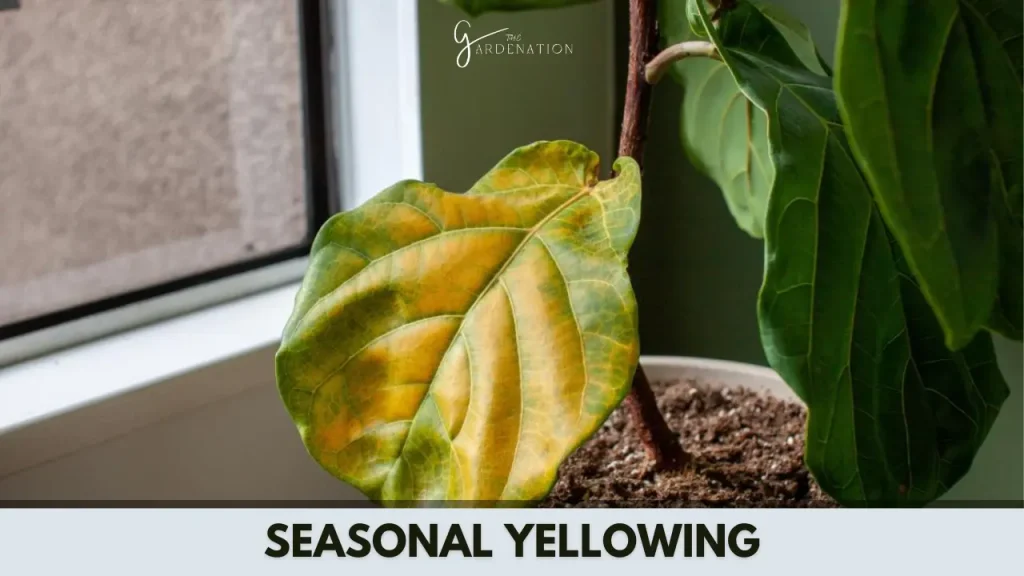
In general the olive tree is an evergreen plant but certain deciduous varieties can also be found. In these varieties yellowing of leaves occurs when older leaves prepare them for shedding or senescence. However if excessive yellowing occurs outside the seasonal pattern it indicates issues affecting plant health that require attention.
9. New Growth Yellowing:
Monitoring new growth for the sign of yellowing can provide guidance about the proper care of plants for the ongoing stressors. As yellowing of newly emerged leaves can be a sign of stress and deficiencies that plant is facing. If care is not taken at this stage it can affect future yield and deteriorate trees ability to produce foliage.
To justify yellowing in olive tree leaves, it is important to understand its underlying cause. This can be done by soil tests, pests and diseases inspection, evaluating water practices and considering environmental factors. Once the cause is identified, appropriate measures can be taken to cure the yellowing of leaves. Consulting an agrarian can aid the process and is recommended.
Prevention from Yellowing of Leaves
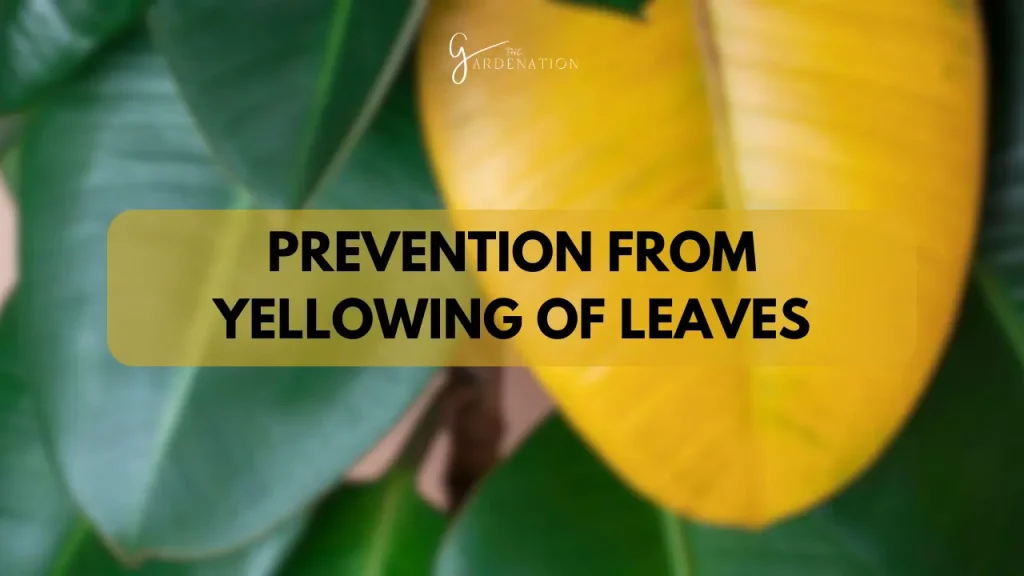
I have explained various types of yellowing of leaves and their causes. Now that I have diagnosed the cause of yellowing, I will take preventive measures to prevent yellowing.
So here is how one can prevent yellowing in different stress conditions.
Drought and Flooding:
Proper care of plants is needed. To prevent plants from dehydrating, consider their water requirement. Young trees require more water as compared to old ones. In hot summer days and dry months too, trees require more frequent watering.
Too much watering is not good either. As it causes root rot and cell death in the root zone. To prevent this soil should be kept moist not overwatered and before watering let the top layer of soil to dry out. Too much watering also causes nutrient deficiency as in well drained soil if too much water is added it leach down salts and nutrients with it too.
Nutrient Management
As described above, the major cause of yellowing or chlorosis is inefficient production of chlorophyll, which is the main signal of nutrient deficiency. So a timely soil test must be conducted to check the nutrient status of soil and then fertilizer and nutrient application must be done according to the recommended dose.
Organic matter and mulch must be given regularly to the tree, as it keeps plant health at its best. But over fertilizing must be avoided as it can cause nutrient toxicity. Best application of nutrients is the one that is recommended by the manufacturer.
Diseases and Pests
Yellow spots such as peacock spots are caused due to fungal attack. So fungicide application is recommended. Copper oxychloride or copper based fungicides helps to prevent fungal attack. And in case of viral infection firstly remove the affected leaves and avoid any contact of the viral portion of olive leaves with other leaves and other plants. It helps to prevent further outbreak of disease.
Spider Mites and thrips are the major pests attacking and feeding on olive tree leaves. They can be controlled by suitable application of pesticides.
Environmental Stress
Firstly in early growth periods, it requires proper sunlight. So it must be planted where it can enjoy proper sunlight of 6-12 hours per day.
Overcoming environmental stress can be challenging so it should be considered from the beginning. Select the most suitable variety according to climate and other factors. Maintain proper soil health by adding mulch and organic matter. Watering must be done according to the growing season. In this way plants can overcome environmental stress and prevent yellowing of leaves.
Frequently Asked Questions About Yellowing of Olive Tree Leaves
Does Yellowing of Olive Tree Leaves Affect its Growth?
Chlorosis of olive leaves is certainly due to any stress affecting plant health. Thus, any factor causing chlorosis and affecting plant health will definitely affect its growth. And the important consideration is that the yellowing of a leaf is actually a signal from the plant that it should be taken care of, otherwise its production will decline.
What’s the Easiest Way to Take Care of an Olive Tree?
The easiest way of caring for a plant is the provision of proper organic matter and mulch. Watering should be done in time and plants must be given proper climate and sunlight. This will help the plant to build its own immunity so certain diseases will have no or less effect on its growth.
Conclusion:
Yellowing of leaves in olive trees can be a serious concern signaling towards various factors affecting plant health. Whether it is pests or disease, nutrient deficiency or unfavorable environment. There are several forms of yellowing.
By identifying the right type and taking a few tests one can identify the actual cause of decline in plant health and it can be cured. It will help to get the best yield from olive trees.

